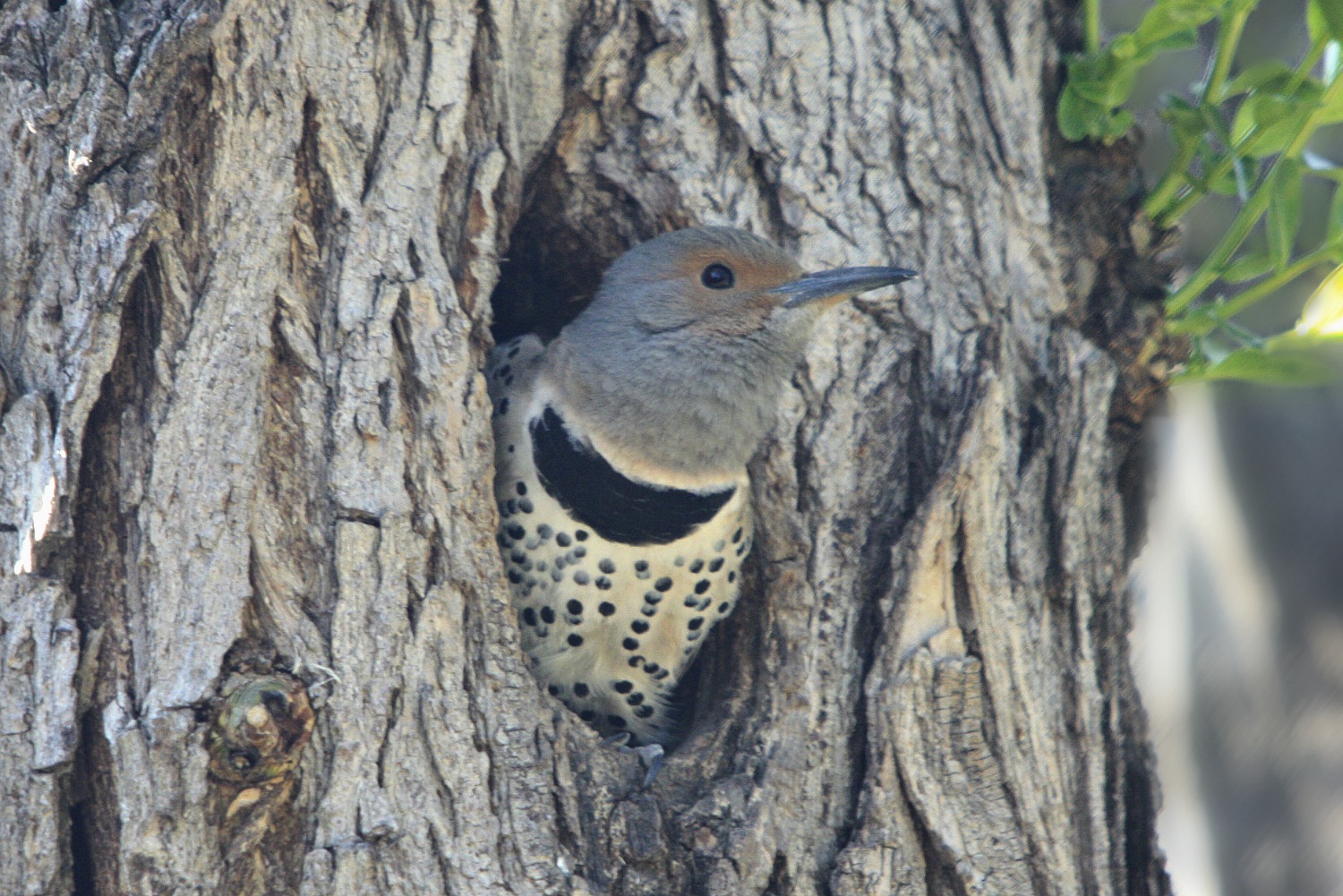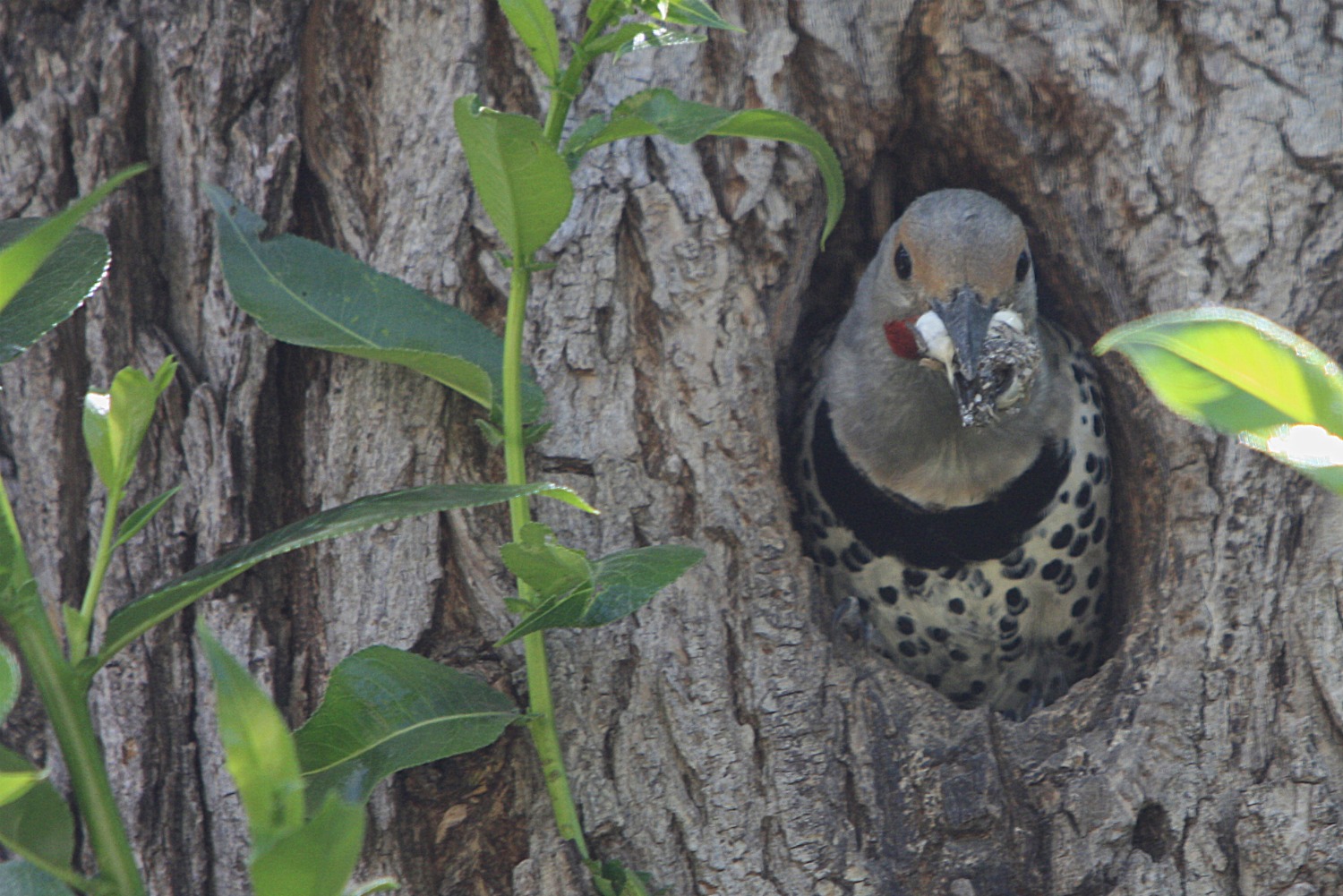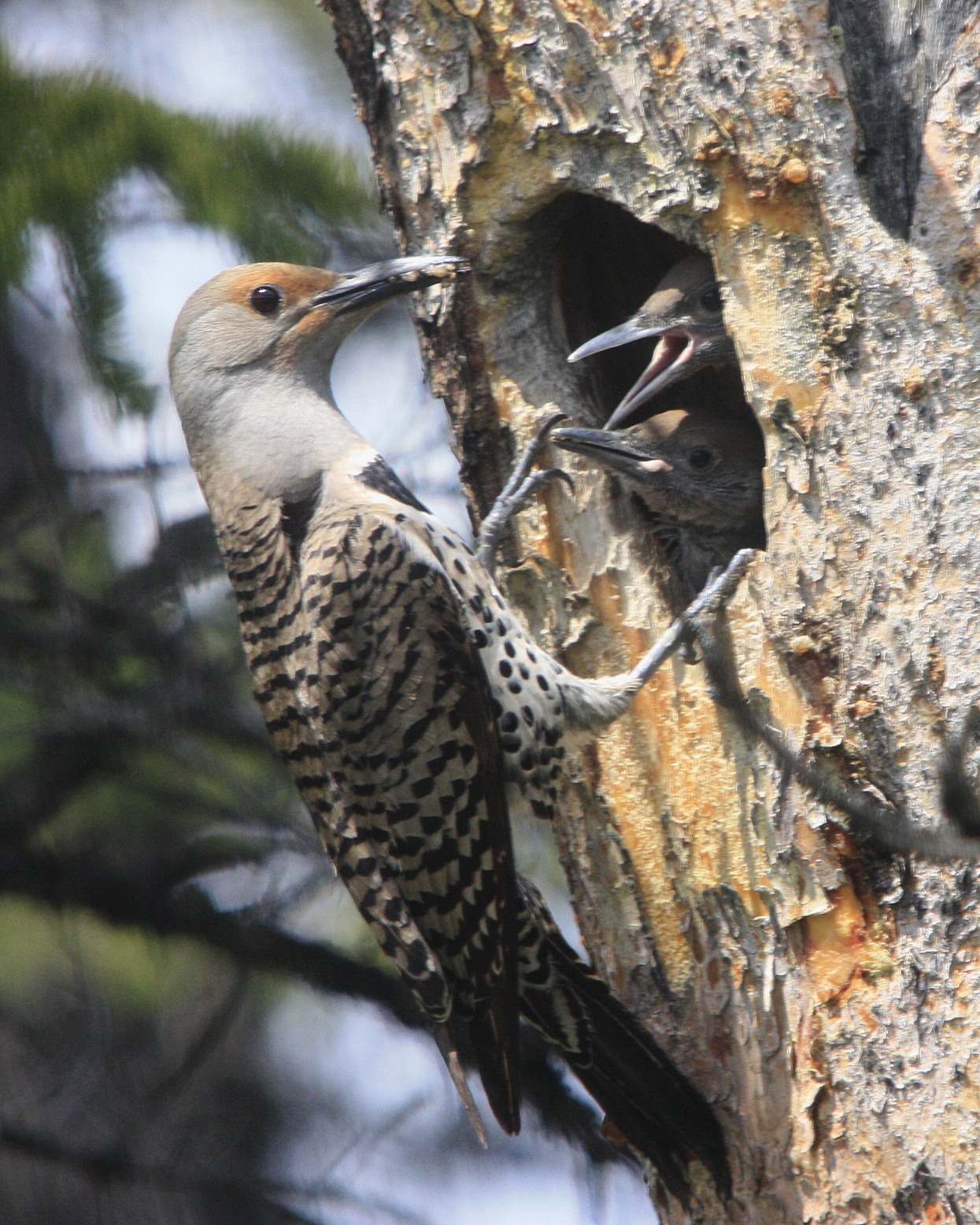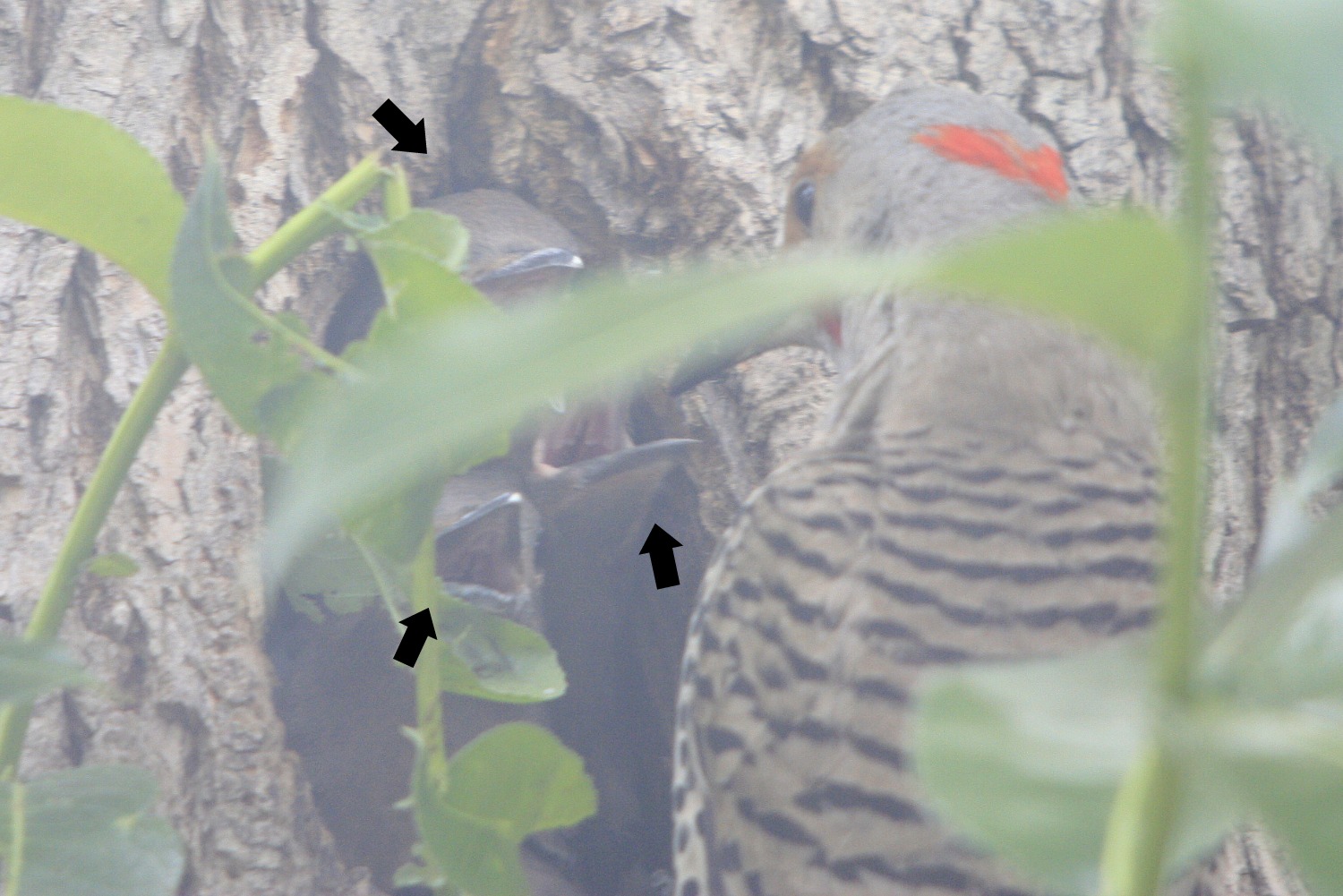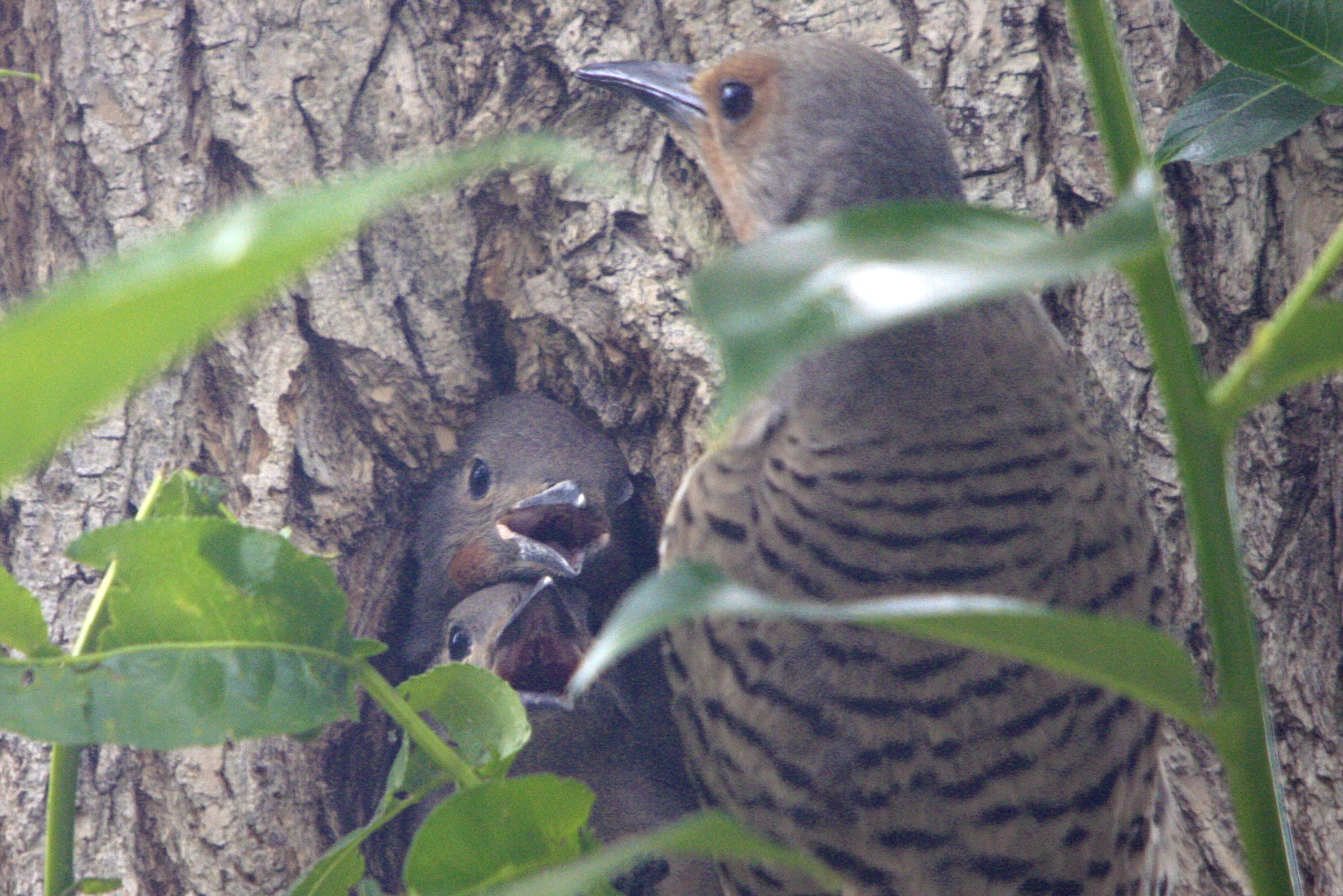Posted by Dan Arndt
Clear skies and warm sun help make any day out in Fish Creek Provincial Park more fun for everyone, and birders are no exception. 3 hours of trekking through Votiers Flats added four new birds to my year list, bringing year total to 43 after a successful previous day that added a Prairie Falcon, Gyrfalcon, and Northern Hawk Owl to the list. I was hesitant to begin “listing” but I can definitely see the appeal to it now, as it not only helps track the birds you’ve seen, but the when, the where, and the numbers seen, which can then be added to a more usable database, such as eBird, for instance, where I’ve been tracking the numbers each week so far for the course.

Votier's Flats
We started off at 9 am, as usual, and walked towards the McLeod Trail underpass, searching for an American Dipper that had been seen earlier in the week, and fairly regularly since December. On our way over Bridge 8, we stopped to pay attention to some Black-capped Chickadees and White-breasted Nuthatches who dropped in to pick at some seeds that had been left on the railings.

Black-capped Chickadee

White-breasted Nuthatch and Black-capped Chickadee
Around the corner and… no sign of the dipper. While there’s a bit of open water, there’s no sign of the elusive swimming songbird. On a lighter note, we did manage to get some great light to show off the always stunning iridescence of one of the most maligned city birds, the Rock Pigeon.

Rock Pigeon
We decided to follow the river bank on the south side, as there appeared to be more open water up closer to the storm water drainage, and after spotting some Mallards splashing about, the mysterious and wonderful American Dipper made its appearance. While it was a bit far off, we viewed it from afar and snapped away, thinking this shy creature would keep its distance.

American Dipper - Keeping its distance

American Dipper making a splash
After it disappeared around a bend, we stopped above the outflow of the drainage pipe to peer across the river at a Northern Flicker, and I just so happened to look down at the right moment, as the light caught it just right… the American Dipper! There it sat, not 40 feet away, and about 10 feet below us, casually sunning itself and searching for insects in the open water. In fact, it behaved as if nothing at all was unusual about fifteen people staring at it for what seemed like an eternity, that it was us that decided it was time to carry on.

American Dipper

The white nictitating membrane over its eyes allow the American Dipper to see under water while protecting its eyes. It also has a pair of scales that close off its nostrils while under water.

American Dipper
Around the curve of the pathway, another sharp-eyed attendee spotted an unknown falcon sitting high up on the slope, and we heard the tell-tale harassing calls of a trio of Blue Jays from an adjacent tree. After considering the field marks and weighing the size, body proportions, and discussing the differences between the Good, the Bad, and the Ugly, we ultimately decided that this was in fact a Merlin. Merlins, Coopers Hawks, and Sharp-shinned Hawks all share similar markings, size, and from a distance can be troublesome to identify. Juveniles of all three species are typically separated out on only a few field marks, most of which only apparent from close observation, but adults, such as this one, are much easier to properly ID. Note the faint moustache, brown streaky chest and belly, dark eye with pale eyebrow, and mostly pale and indistinct facial markings. The brown crown feathers indicate that this is either a female or juvenile Merlin, as the male has a light blue-gray crown. Also note that my photo of the Merlin from 400 meters away was so indistinct that I was forced to return later to attempt some better shots of this little beauty. Thankfully, she cooperated.

Merlin
As we were heading out, Bob Lefebvre managed to spot a Golden-crowned Kinglet alighting atop one of the trees near the Merlin, and with that, we headed back into the park. Near Bridge 8 we spotted two of our only Downy Woodpeckers of the day.

Downy Woodpecker
Back into the brush we headed west, and after a quiet bit of walking, we found a pair of Red-breasted Nuthatches feeding from a small hole in this spruce, that had been repurposed as a feeding station.

Red-breasted Nuthatch
We continued through the forested area, hearing a call not unlike that of a European Starling, but more steady and higher pitched. It’s a song I haven’t heard in months, and while I couldn’t place it, once again Bob’s expert ear identified it as a Pine Siskin, a good number of which we saw flitting amongst the treetops.

Pine Siskin
Onward to the last leg of our journey – a copse of spruce that was home to a group of Boreal Chickadees, as well as a Brown Creeper seen earlier in the week. The Boreal Chickadees made themselves known fairly quickly, and while we heard the Brown Creeper a number of times, we could not spot it after spending a good twenty minutes searching for it.

Boreal Chickadee
All in all, it was a great day! If I can keep up at this rate, I’ll hit my goal of 200 species by May… and then what will I do?













